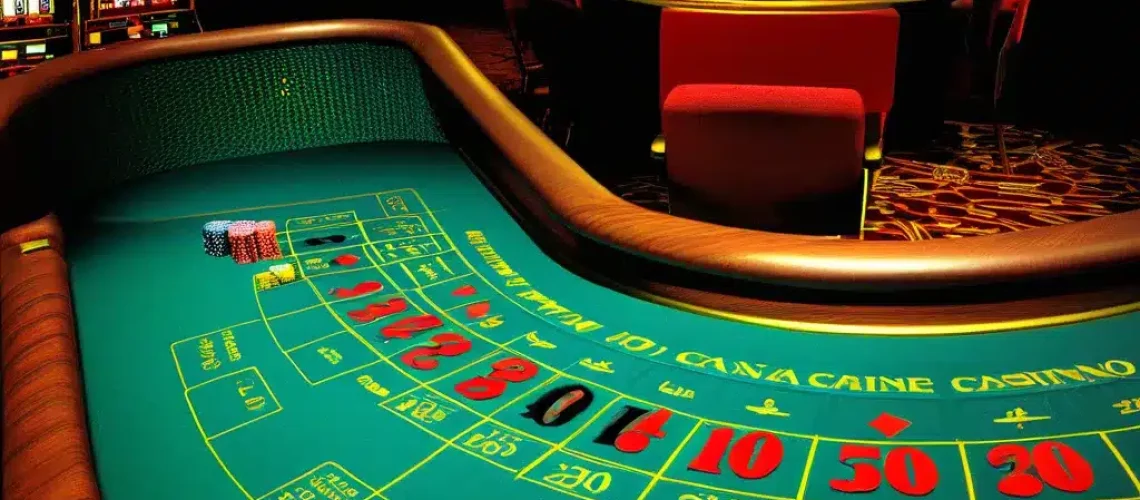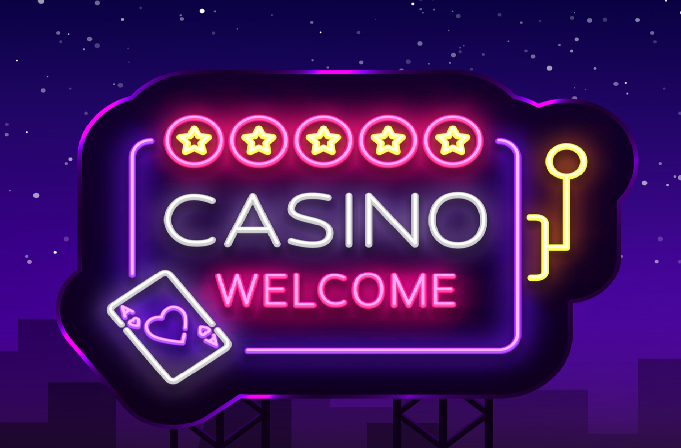Developer History of House of Fun: Game Creation Story

Have you ever thought how the combination of technical knowledge and innovation leads House of Fun to a trailblazing game like House of Fun? As you explore this developer story, you’ll uncover the strategic roles played by the artistic director, lead developer, and project manager. Their combination of cutting-edge technology with imaginative gameplay development ensures an engaging experience. Stay interested as you uncover the challenges and motivations that shaped this energetic slot game.
Key Points
- The House of Fun idea combines technical expertise with creative vision, aiming for innovative gameplay beyond conventional slot games.
- A dedicated development team, including a creative director and lead coder, ensures artistic and technical excellence.
- Advanced graphics rendering and multiplayer inclusion create immersive environments, requiring skilled analysis for coding and design challenges.
- Player engagement strategies include feedback-driven design and community discussions to maintain freshness and excitement in gameplay.
- Continuous progression involves new features and theme introductions, marketing through social media, enhancing gameplay experience, and refining based on player feedback.
Origins of the House of Fun Idea
The origins of the Home of Fun notion are based in a singular intersection of specialized skills and artistic perspective. You’ll find that the path of notion progression began during initial ideation sessions. Here, ideas flowed freely, driven by a intense comprehension of gaming dynamics and an designer’s creativity. Merging the thrill of surprise with smooth gameplay demanded accurate technological adjustments and innovative resolutions. Each element was carefully created, pushing the boundaries of conventional slot titles. You were required to integrate intricate algorithms with engaging aesthetic tales, ensuring they supplemented rather than conflicted. This was a solution-finding challenge that called for you to rethink existing restrictions and create a new digital experience. Expertise lay in the nuances, testing you to reshape interactive tale-telling.
Key Team Personnel and Their Functions
In understanding the creation team structure behind Establishment of Fun, you’ll recognize the technological knowledge and imaginative vision each member brings to the discussion. Identify how their problem-solving capabilities transform into crucial input that improve play and participant interaction. Grasp the specific roles and tasks that fuel creativity and maintain the project seamlessly on course.
Development Team Structure
When building a successful game like House of Fun, understanding the development team’s framework becomes crucial. You need a team with robust technical skills, imaginative vision, and strong problem-solving skills. Ensure the team’s dynamics are optimized by defining specific roles. The imaginative director spearheads the artistic vision, while the lead coder focuses on technical robustness. A project manager coordinates tasks, ensuring cohesive team dynamics and smooth communication strategies.
Foster an setting where communication travels freely among creators, coders, and testers to tackle challenges effectively. By utilizing each member’s capabilities, you’ll build a game that not only meets but goes beyond user expectations. Developing a structured team ensures that each innovative idea is carefully crafted into a efficient aspect of the game.
Team Members’ Roles
Even though crafting a winning game demands a blend of talents, understanding each team member’s distinct contributions is essential. Imagine the technical expertise the lead programmer brings, turning artistic vision into functional code. Their problem-solving skills ensure glitches become showcases of ingenuity. On the visual front, the art director’s cutting-edge concepts transform ideas into engaging visuals. Their ability to nurture team synergy is crucial for maintaining a unified aesthetic across platforms. Meanwhile, the game designer’s insight shapes engaging mechanics, balancing player engagement with operational capability. By channeling their individual member skills, they jointly sculpt an entertaining experience. Each individual’s dedication to excellence cultivates a story beyond coding and pixels—one where your expertise drives the House of Fun’s resounding success.

Roles and Responsibilities
Even as you dig into the intricate realm of game development, the roles and duties of key team players in House of Fun are crystal clear. The magic starts with the lead designer, who shapes the game’s creative vision and ensures role alignment among team members. Their technical knowledge meshes seamlessly with the developers’ coding prowess, creating a robust structure ready for vivid storytelling. Partnership dynamics are pivotal; artists bring characters and environments to life, guided by designers’ blueprints. Meanwhile, QA testers act as problem solvers, rigorously evaluating each component to ensure a seamless user interaction. Producers manage schedules, driving coherent execution. Each member’s contribution, aligned with overarching goals, fosters an ecosystem where creativity thrives and creativity is limitless.
The Role of Innovation in Game Development
When advancing game development, you harness cutting-edge graphics rendering methods to create immersive and visually stunning environments. Integrating real-time multiplayer features requires precise technical skill, allowing players to engage seamlessly from any place in the world. These technological developments demand a blend of creative vision and problem-solving prowess, ensuring an engaging and dynamic gaming encounter in House of Fun.
Advanced Graphics Rendering Techniques
Utilizing state-of-the-art graphics rendering techniques propels game https://pitchbook.com/profiles/company/177161-86 creation into new realms of creativity and technical accuracy. You’ll examine texture mapping to create surfaces that spring to life, adding depth and realism to the game setting. Lighting effects provide dynamic atmospheres, transforming simple scenes into engaging experiences. Proficiency of these factors requires:
- Understanding light properties
- Precision in texture mapping
- Shader development
- Performance enhancement
Arming yourself with these skills unlocks the ability to elevate your game’s visual storytelling. Keep in mind, effective issue resolution will require the delicate harmony of artistry and engineering to capture your audience’s imagination.
Real-time Multiplayer Integration
Integrating instant multiplayer capabilities into your game serves as a testament to the transformative power of tech in contemporary game development. By leveraging live alignment, you ensure each player’s moves are seamlessly duplicated across their screens, maintaining engaging involvement. To reach harmonious multiplayer dynamics, your plan must foresee changing network environments and incorporate robust algorithms that manage latency and packet loss. You’re assigned with crafting a smooth experience where every player feels in sync, navigating a digital landscape that seems alive and reactive. It’s not merely about building a system; it’s about designing a game that’s flexible and user-friendly. Your engineering expertise combined with creative vision will drive problem-solving as you enhance algorithms, optimize servers, and secure reliable instant interactions.
Overcoming Manufacturing Challenges
Creating a compelling gaming environment like House of Fun demands the ideal blend of engineering expertise, artistic vision, and solution-oriented skills to conquer production challenges. You confront manufacturing hurdles directly with a strong focus. The developers’ determination shines through careful planning and flexible adaptation, which are vital to your efficient execution. Collaborating effortlessly within the crew fosters innovation and drives answers under strain.
- Technical Expertise
- Creative Perspective
- Problem-Solving Skills
- Team Strength
Influences Behind the Gameplay Development
While designing the gameplay design for House of Fun, developers drew ideas from a diverse tapestry of cultural influences and innovative mechanics. They investigated into game mechanics that combine traditional casino features with dynamic storytelling, ensuring players remain intrigued. You’ll notice the developers’ keen attention to detail when playing with varying themes and interactive tasks, all supported by technical accuracy.
A keen eye for visual aesthetics influenced their selections, drawing from art movements and vibrant palettes to create an immersive, immersive experience. Their creative perspective melded these elements to achieve an ideal balance between thrill and strategy. By integrating cultural motifs and contemporary style, you uncover a gaming experience that’s both visually attractive and mentally stimulating, poised to enthrall even the most discerning players.
Strategies for Engaging Players
One crucial approach for engaging players in House of Fun revolves around the careful crafting of reward systems that smoothly integrate with gameplay mechanics. You’ll find that using player feedback allows for the continual refining of these systems, ensuring they connect with your audience. Encouraging community engagement fuels creative problem-solving, leading to more lively and immersive gaming experiences. Consider these strategies:
- Gather direct feedback through in-game surveys and adapt based on this data.
- Create a forum for players to express ideas and experiences, cultivating a thriving community.
- Design challenges that reward teamwork and strategic thinking, keeping motivation high.
- Iterate regularly based on feedback, maintaining originality and excitement.
Marketing Approaches and Audience Reach
Engaging players through innovative reward systems naturally complements strategic marketing approaches to maximize audience reach in the gaming world. You’ve got to employ social media and influencer partnerships effectively to connect with your target demographics. Start by analyzing user engagement data, which will guide your promotional campaigns and ensure they connect with the right audience. Craft content that captures the essence of your game, making it shareable.
Assemble community feedback to refine your plans regularly. Use advertising tools that create a stir, attracting both dedicated and fresh players. Aim your market precisely, improving campaigns for each segment. Remember, planned alliances with advocates can greatly boost your game’s visibility, forming an authentic relationship with their audience and growing your game’s range.
Evolution and Continuous Improvements of the Game
As House of Fun keeps to progress, the game’s developers leverage specialized skills, innovative perspective, and critical thinking skills to offer an constantly-enhancing experience. You gain from their dedication to refining game systems based on thorough player responses. This ensures a adaptive experience designed to your preferences.
Key areas of attention include:
- Optimization
- Innovation
- Balancing
- User Interface
Frequently Asked Questions
What Was the Funding for Building House of Fun?
To understand the finances for building House of Fun, you’ll immerse into game funding and budget breakdowns. Employ your technical knowledge, creative vision, and analytical skills to analyze how costs were strategically allocated for maximum effective development.
How Long Did the Game Take to Develop?
To grasp the creation timeline for House of Fun, visualize the project’s multiple stages. You’d see the team’s technical expertise blending with creative vision, solving intricate issues over many weeks to deliver an captivating game encounter.
Did the Creators Face Any Legal Challenges?
You examine the creators’ path, tackling legal obstacles involving intellectual property. Their problem-solving skills shine as they combine technical expertise with creative insight to navigate these challenges, ensuring creativity stays at the forefront while respecting existing legal frameworks.
What Languages Is the Game Coded In?
You’re in luck, just as you consider coding syntax, you trip upon this: the game’s primarily coded in C# and Python. Those languages provide a balance of creative insight and technical skills, overcoming coding obstacles with analytical skills.
Are There Any Easter Eggs in the Game?
In “House of Fun,” you’ll discover hidden elements and player allusions, skillfully integrated. Your https://data-api.marketindex.com.au/api/v1/announcements/XASX:ALL:2A1556190/pdf/inline/update-on-final-dividend technological expertise and imaginative vision will aid you in finding these easter eggs, enhancing gameplay through your troubleshooting skills. Keep searching and mastering!

![Daniël Klijn [LittleDean]](http://www.littledean.nl/wp-content/uploads/2018/10/cropped-Littledean-LONG-wit-1-1-1.png)